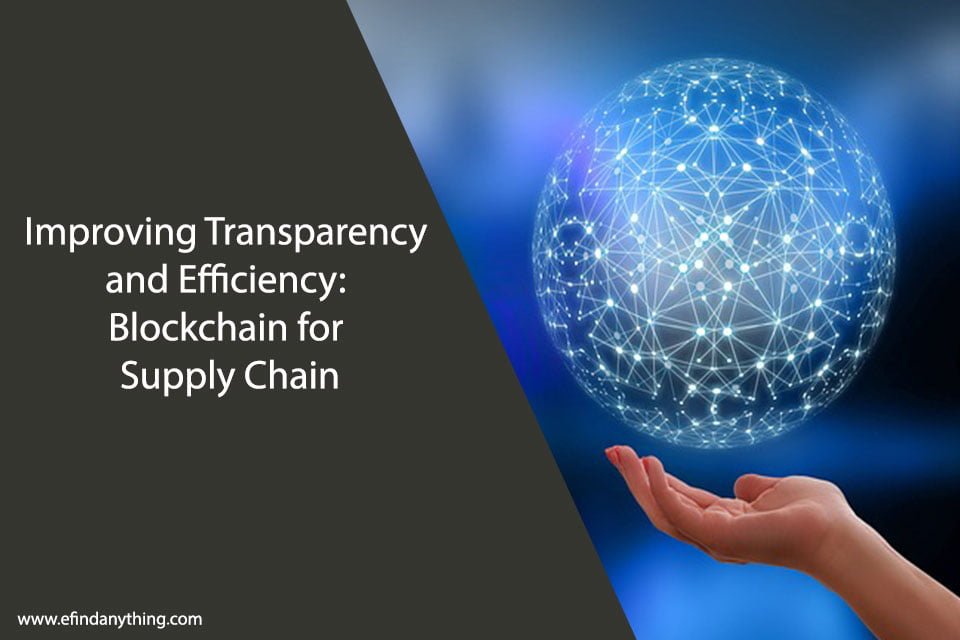
Supply Chain Management is the backbone of global commerce, ensuring products move from manufacturers to consumers efficiently. However, traditional supply chain systems often suffer from opacity and inefficiency, leading to various challenges like counterfeiting, delays, and errors. To tackle these issues, innovative solutions are emerging, leveraging the power of digital transactions to streamline processes. In this article, we will explore how blockchain technology can revolutionize supply chains by enhancing transparency and efficiency. More Information about the essentials of investing is here to help you every step of the way.
Table of Contents
Understanding Blockchain Technology
What is Blockchain?
Blockchain is a decentralized digital ledger that records transactions across multiple computers in a tamper-resistant and transparent manner. Each transaction, or “block,” is linked to the previous one, forming a continuous chain. This technology was originally designed to support cryptocurrencies like Bitcoin but has since found applications in various industries, including supply chain management.
Key Components of a Blockchain
- Decentralization: Unlike traditional centralized systems, blockchain operates on a peer-to-peer network, eliminating the need for intermediaries.
- Cryptographic Security: Transactions are secured using cryptographic techniques, making it extremely difficult for unauthorized parties to alter data.
- Consensus Mechanisms: Blockchain relies on consensus algorithms to validate and add transactions to the ledger, ensuring trust and reliability.
- Transparency: All participants in a blockchain network can view the same information, enhancing transparency.
How Does Blockchain Work?
- Transaction Verification: Transactions are verified by network nodes through consensus mechanisms like Proof of Work (PoW) or Proof of Stake (PoS).
- Immutable Records: Once a transaction is added to the blockchain, it cannot be altered or deleted, ensuring a permanent and transparent record.
- Distributed Ledger: The ledger is distributed across multiple nodes, reducing the risk of a single point of failure and enhancing security.
Blockchain vs. Traditional Supply Chain Systems
Traditional supply chain systems often rely on centralized databases, which can lead to data discrepancies, delays, and limited transparency. In contrast, blockchain offers real-time visibility into the movement of goods, reduces the risk of fraud, and streamlines processes.
Benefits of Implementing Blockchain in Supply Chains
Enhanced Transparency
Real-time Tracking of Goods
Blockchain enables real-time tracking of products from manufacturer to consumer, providing stakeholders with up-to-the-minute information on product location and status.
Immutable Records and Traceability
Blockchain’s immutable ledger ensures that each step in the supply chain is recorded and timestamped, allowing for complete traceability in case of product recalls or disputes.
Increased Efficiency
Reduction in Fraud and Errors
Blockchain’s cryptographic security and transparency reduce the risk of fraud and human errors, leading to cost savings and improved reliability.
Streamlined Documentation and Processes
Paperwork and manual processes can slow down supply chains. Blockchain automates documentation and verification, reducing paperwork and processing times.
Improved Security
Cryptographic Verification
Each transaction is cryptographically secured, making it nearly impossible for malicious actors to tamper with the data.
Decentralized Data Storage
Data is stored across multiple nodes, reducing the risk of data loss due to system failures or cyberattacks.
Real-world Examples of Blockchain in Supply Chains
IBM Food Trust
IBM Food Trust utilizes blockchain to enhance the transparency and traceability of food supply chains. It allows consumers to trace the origin of food products, reducing the risk of foodborne illnesses and ensuring quality.
Walmart’s Blockchain-based Traceability
Walmart implemented blockchain technology to trace the journey of pork products from farm to store. The system significantly reduced the time needed to trace the source of contaminated products from weeks to seconds.
Maersk and IBM’s TradeLens Platform
Maersk and IBM collaborated to create the TradeLens platform, which leverages blockchain to digitize global trade. It provides a secure and transparent way for shippers, ports, and customs authorities to share information.
Challenges and Concerns
Scalability Issues
Blockchain networks can face scalability challenges, especially when handling a high volume of transactions. Solutions like sharding and layer 2 scaling are being explored to address this issue.
Integration with Existing Systems
Integrating blockchain with existing supply chain systems can be complex and may require significant time and resources.
Data Privacy and GDPR Compliance
Blockchain’s transparency can raise concerns about data privacy and compliance with regulations like the General Data Protection Regulation (GDPR) in Europe.
Environmental Concerns
Proof of Work (PoW) consensus mechanisms, used in some blockchain networks, consume significant energy. Efforts are underway to develop more energy-efficient alternatives.
Regulatory Landscape
Government Initiatives and Regulations
Several governments are exploring regulations related to blockchain in supply chains to ensure compliance, data security, and consumer protection.
Standardization Efforts in the Industry
Industry organizations and consortia are working on standardizing blockchain technology to facilitate interoperability and widespread adoption.
Future Trends and Outlook
Integration of IoT and AI with Blockchain
Combining blockchain with the Internet of Things (IoT) and artificial intelligence (AI) will enable real-time data collection and analysis, further improving supply chain efficiency.
Interoperability of Blockchain Networks
Efforts to create interoperable blockchain networks will enable seamless collaboration across different supply chain ecosystems.
Potential for Supply Chain as a Service (SCaaS)
Blockchain could enable the emergence of Supply Chain as a Service (SCaaS) platforms, where businesses can access and leverage supply chain capabilities on a subscription basis.
Predictions for the Future of Blockchain in Supply Chains
Blockchain technology holds immense potential to transform supply chains, making them more transparent, efficient, and secure. As the technology matures and regulatory frameworks evolve, its adoption is expected to increase.
Conclusion
In conclusion, blockchain technology offers a promising solution to the challenges faced by traditional supply chain systems. With enhanced transparency, efficiency, and security, blockchain is poised to revolutionize the way products are tracked, verified, and delivered. As the industry continues to innovate and adapt, the future of supply chain management looks brighter than ever before.





